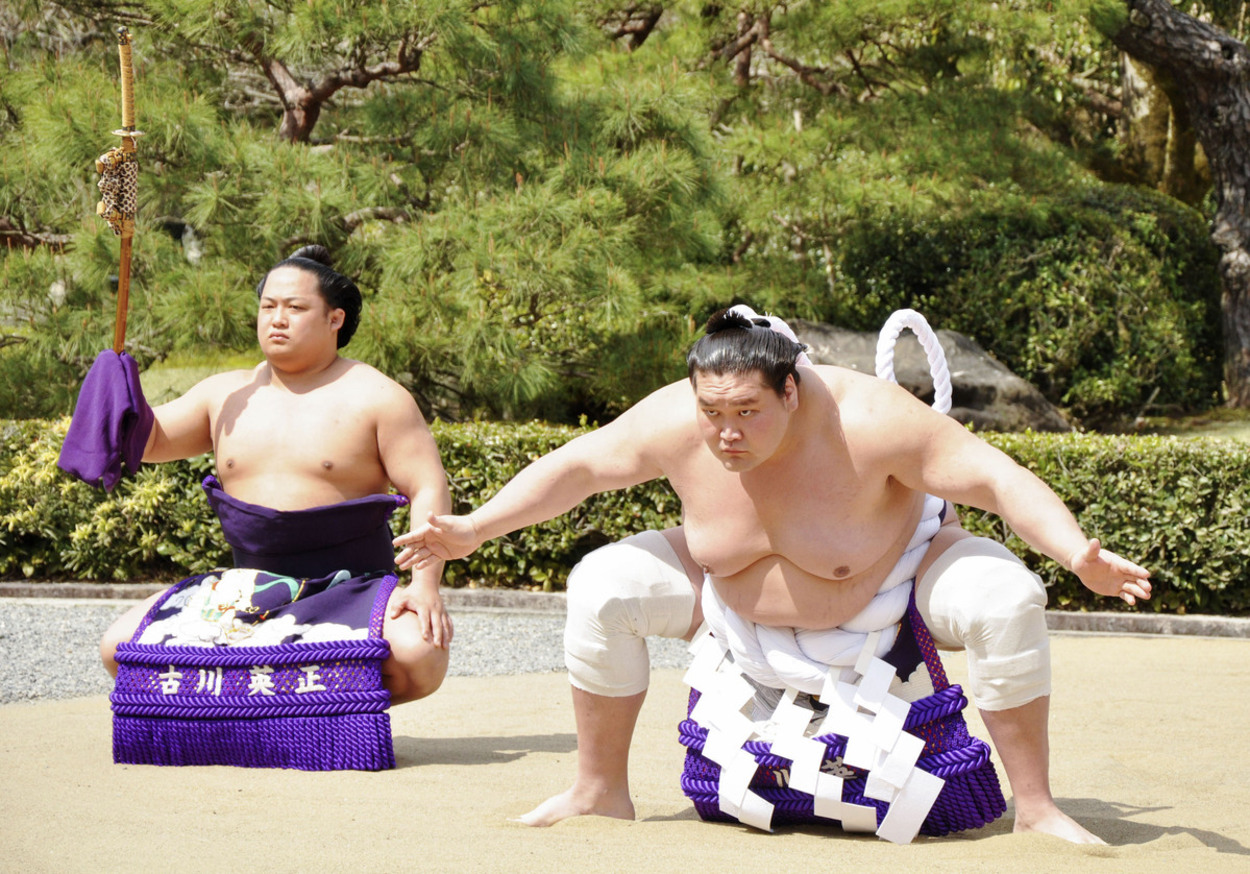
There are legions of sumo fans both in Japan and overseas. They are attracted by the athleticism, pageantry and traditions of this most Japanese of sports.
However, learning a little about the spiritual underpinnings, symbols and actions of the wrestlers (sumotori, rikishi) on display during a tournament can add to the pleasure of watching sumo. This holds true whether you are taking in the tournament in person or on television.
Discovering the Origins of Sumo
Wikipedia and other generally available sources regularly declare that the ancient sport of sumo is thoroughly Shinto in character. This is quite simply wrong.
Not that this claim is totally without merit. Although the staging of sumo matches as a professional sport only dates to the Edo Period (1600-1868), sumo as a ritual appeal to the gods for a good harvest apparently was practiced in prehistoric times. (The Japanese only started recording history in the seventh century.)
Its ultimate roots undoubtedly are to be found in the native religion and Shinto influences which still abound. Take for example the throwing of salt to purify the dohyo (clay ring). Purification is of course an integral part of Shinto.
Then there is the clapping to attract the attention of the kami (gods). This is something you regularly see worshippers at Shinto shrines doing.
The canopy over the dohyo also resembles the roof of a Shinto shrine in the ancient Shinmei-zukuri style. One such example is found in the honden (sanctuary) at the Ise Grand Shrine.
Nonetheless, like the Japanese religious scene in general, nothing is as simple as it might appear at first sight. The religious influences displayed in sumo are eclectic and the influence of "Onmyodo" is unmistakable.
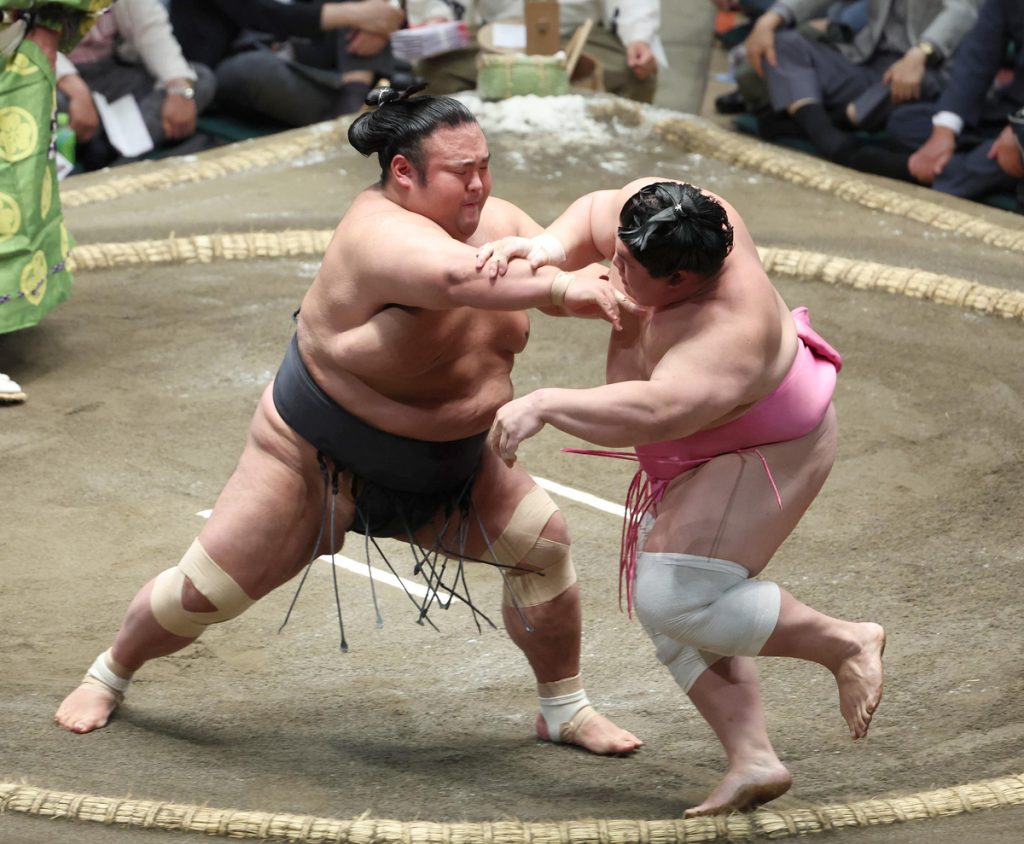
What is 'Onmyodo'?
Although the direct translation would be the "Way of Yin-Yang," Onmyodo is not a Chinese transplant or a local version of Taoism. It is specific to Japan.
Although philosophical and cosmological influences from the Yin-Yang and Five Elements (Five Phases) schools did originate in China, in Japan they were applied and elaborated upon in different ways. These foreign influences blended with native Shinto practices, shamanism and esoteric Buddhism to create a unique synthesis.
The term came to encompass a vast welter of beliefs and practices, spanning astronomy/astrology, feng shui, calendar production, fortunetelling, divination, black magic curses and spells, exorcism techniques and faith healing. Onmyodo was practiced by both official onmyoji (masters of the occult) and freelancers who spread it far and wide. It reached the height of its overt influence during the Heian Period (794-1185).
Although officially outlawed in 1870 as a "pernicious, subversive form of superstition," the influences of Onmyodo still permeate Japanese society.
What does all that have to do with sumo?
Symbols in the Dohyo
Clearly sumo has adopted many yin-yang and five element concepts and symbols.
Start with the shape of the dohyo. The raised ring of tightly compacted earth embodies the cosmological image of the universe found in Onmyodo. This in turn is derived from ancient Chinese philosophical concepts. There is a circle (representing heaven) within a square (representing earth). The circular ring in the center is yang and the square surrounding it is yin.
Onmyoji uses a divination tool known as a shikiban. This comes in several forms and is used in several different kinds of divination. I can't help but speculate that one style dating from the Han Dynasty in China (202 BC – 9 AD, 25–220 AD)around the beginning of the common era might have served as the original model for the dohyo.
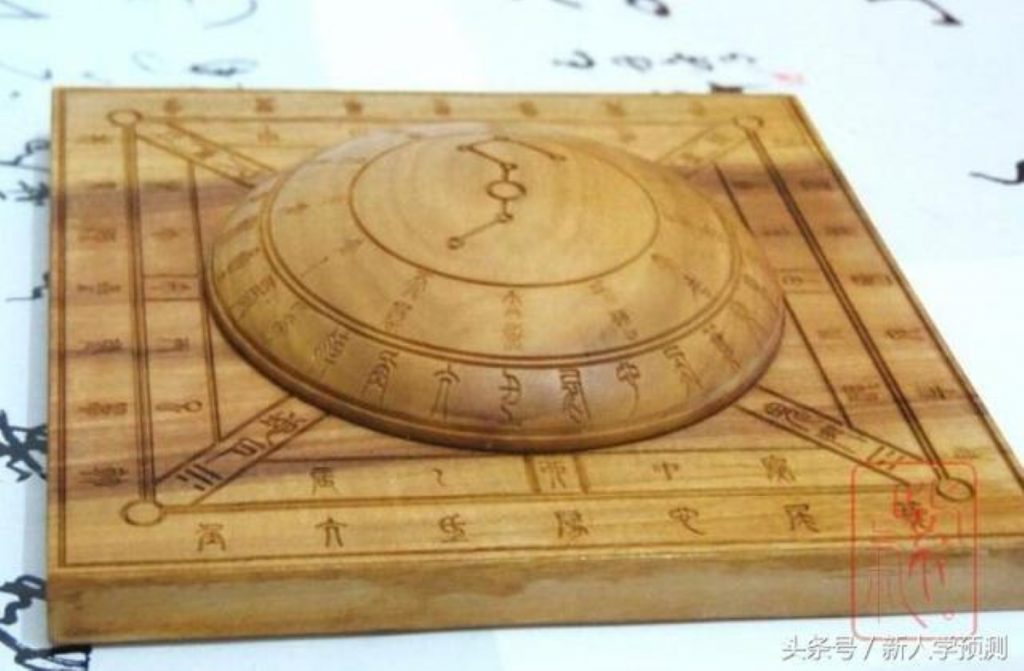
Both Shinto and Onmyodo use spells to create kekkai, or spiritual boundaries, that demarcate the sacred from the mundane. In the case of the sumo dohyo, the straw ring or tawara serves that purpose. It is almost as if during each match the two sumotori and the referee (gyoji) are operating on a different plane of reality once they enter the dohyo.
On a more practical level, the wrestlers can also plant their heels against the tawara in order to stop or slow an opponent's attack.
The dohyo might also be compared to an ephemeral mandala, since a new dohyo is created before each tournament and then destroyed after it ends. Incidentally, building up the dohyo is a labor-intensive, three-day process performed with traditional tools.
Spiritual Inclusion of the Five Elements
Next, we have the shibusa, tassels in four different colors, which hang down from the ceiling of the suspended roof. Prior to 1952, this roof was supported by four pillars, but they were removed to afford spectators better viewing.
The shibusa represent the four directional deities (white tiger, red bird, black turtle and blue dragon), with the white (metal) tassel representing west, the red (fire) tassel south, the blue (wood) tassel east and the black (water) tassel north.
These four same colors of white, red, blue and black stand for the four seasons. In fact, the five colors identified with the Yin-Yang five elements tradition are all present, because the color of the ring (brownish yellow) is counted along with the colors of the four tassels.
Incidentally, in the Chinese scheme there are actually five directions. That is because the center is counted as one, and indeed it is held to be the most important one.
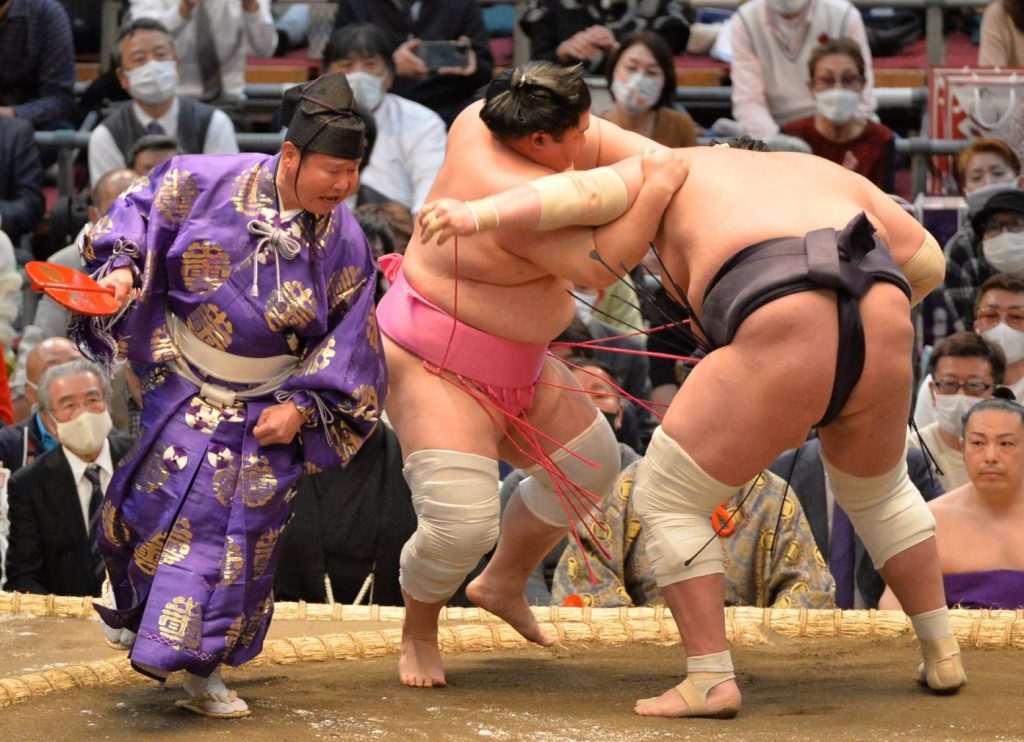
Significance of the Referee
That brings us to the gyoji or referee who officiates at the matches. The traditional uniform he wears may be that of a Shinto priest. But it is also similar to what the official onmyoji wore to reflect their court rank.
The gyoji carries a shiny black gunbai fan. This he uses to signal the winner of a bout and hands over winnings when supporters have put up money. The gunbai was originally a war fan held by a military leader during battle. If you look closely, you will see that one side shows a moon and a sun, which stand for yin and yang, respectively.
The gyoji will often shout the phrase hakke yoi. This is an expression which is derived from fortune telling methods using the I Ching (Classic of Changes). It literally translates as "the eight trigrams (bagua in Chinese) are favorable."
In other words, it means "smooth sailing" or "all is well." Essentially, the gyoji is telling the rikishi to get down to it.
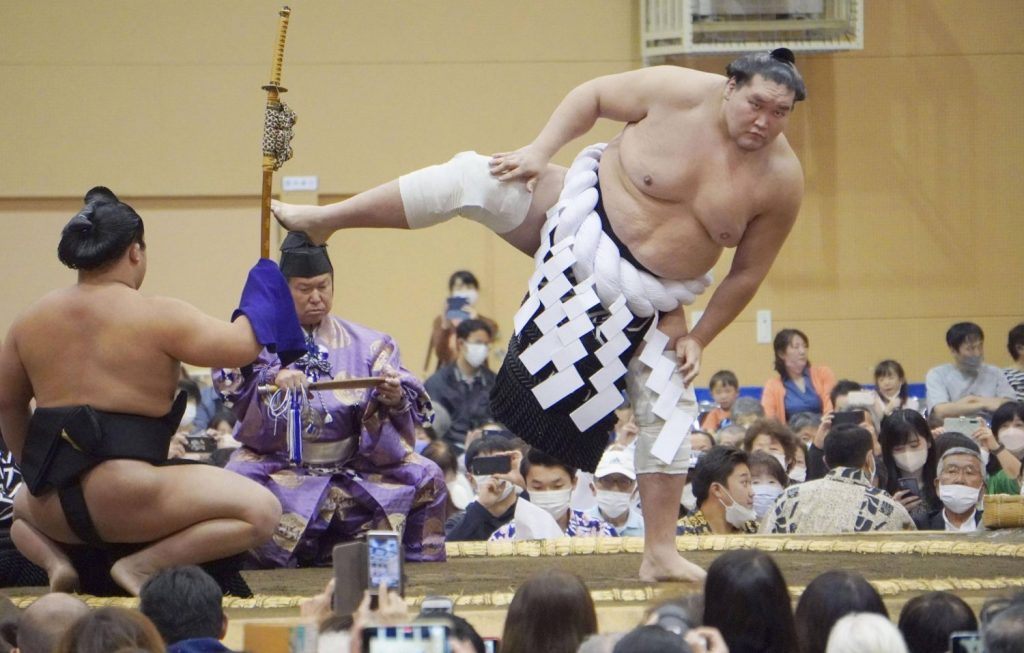
Rituals of the Sumotori
Who doesn't enjoy watching the sumotori performing their high-stomping warmup prior to the start of a match. But there is far more to this shiko stomp than a simple limbering up exercise.
This distinctive mode of stomping is generally said to have originated in a Shinto ritual in which the wrestlers who step into the ring hail the sacred gods and then trample down and subdue evil spirits lurking underground.
Since ancient times, the term shiko (四股) — used to describe the high lifting of the legs and stomping — has been associated with "ugliness." Indeed, the original kanji used for this act, 醜, had connotations of "ugly" or "unclean." So, it may be viewed as a form of ritual purification designed to trample down, subdue and clear out repulsive, evil spirits.
Indeed, some researchers believe it might originally have been an agricultural ritual performed by shaman-sorcerers or onmyoji to make the land fertile and deliver good crops. From another perspective, the shiko also can be viewed as a ritual invitation to the kami of the four directions to join in the celebration and bless it.
The shiko is said to have developed from the henbai (magical exorcism steps). This is a distinctive manner of walking used by onmyoji involving the lifting high of one knee at a time. Set in sequences of almost dance-like steps, it establishes a protective spiritual cordon. One example is found when the emperor or high noble is moving about in society. Traditionally, an onmyoji would precede him to clear the path and exorcise any spirits intending harm.
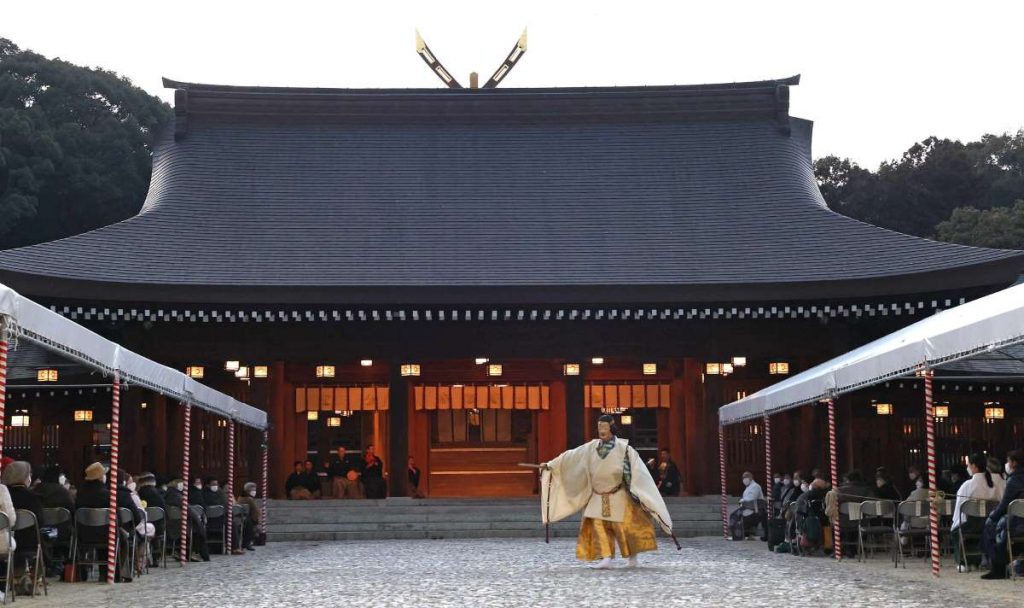
Influence on the Performing Arts
The performance of purifying movements originated in China towards the end of the Warring States period or in the early part of the Han Dynasty. Known as yubu (literally "Yu walking"), it was a ritual named after Yu, the legendary sage king. In the legend, he was the one who controlled the floods that were the scourge of early China.
The henbai itself has had an enormous influence on the development of Japanese performing arts. Kagura dances and the Noh are ready examples. It has also been performed during public events of a strongly competitive character. These include sumo matches, horse races and archery or even singing contests.
Ancient records show that onmyoji employed the henbai during the Sumo Festival held each July. It took place within the imperial palace in Heiankyo (today's Kyoto) as they led sumo wrestlers into the garden. That is where the emperor would watch their performance
About the Twirling Bow
Finally, we have the yumi-tori shiki, or "bow-twirling" ceremony, held at the end of each day's matches during a tournament. It too can be traced back to Onmyodo. A bow ceremony was one of the ceremonies held within the Imperial Palace during the Heian Period. It was used to subdue onryo, or vengeful spirits, as part of the Setsubun rites to mark the ushering in of spring.
This ceremony only became part of sumo in the Edo period (1600-1868). Although the sumo version differs in details from the earlier Onmyodo version, the purpose is the same. In other words, to drive off evil spirits or demons.
In the ritual, the rikishi who is specially chosen to perform it wields a traditional bamboo bow, minus the string. First, he twirls it, sending evil spirits in the air flying. Then he makes a digging gesture to dig out the earth demons. Finally, he engages in shiko stomping to finish off any fiends that might still be lurking around.
RELATED:
- Sumo Wrestling's Solid Foundation in the UK and Europe
- [ODDS and EVENS] Photographer Lord K2 Captures the Soul of Sumo in New Book
- [Soul of Japan] The Divine Age of Shinto
Author: John Carroll
John Carroll is a Kyoto-based freelance writer and JAPAN Forward contributor. He is currently writing a book on the religious traditions and superstitions of Japan's ancient capital. Find his essays and reports at this link.

Spring Basho Tournament Records
Makuuchi Division
| Day | Opponent | Result |
|---|
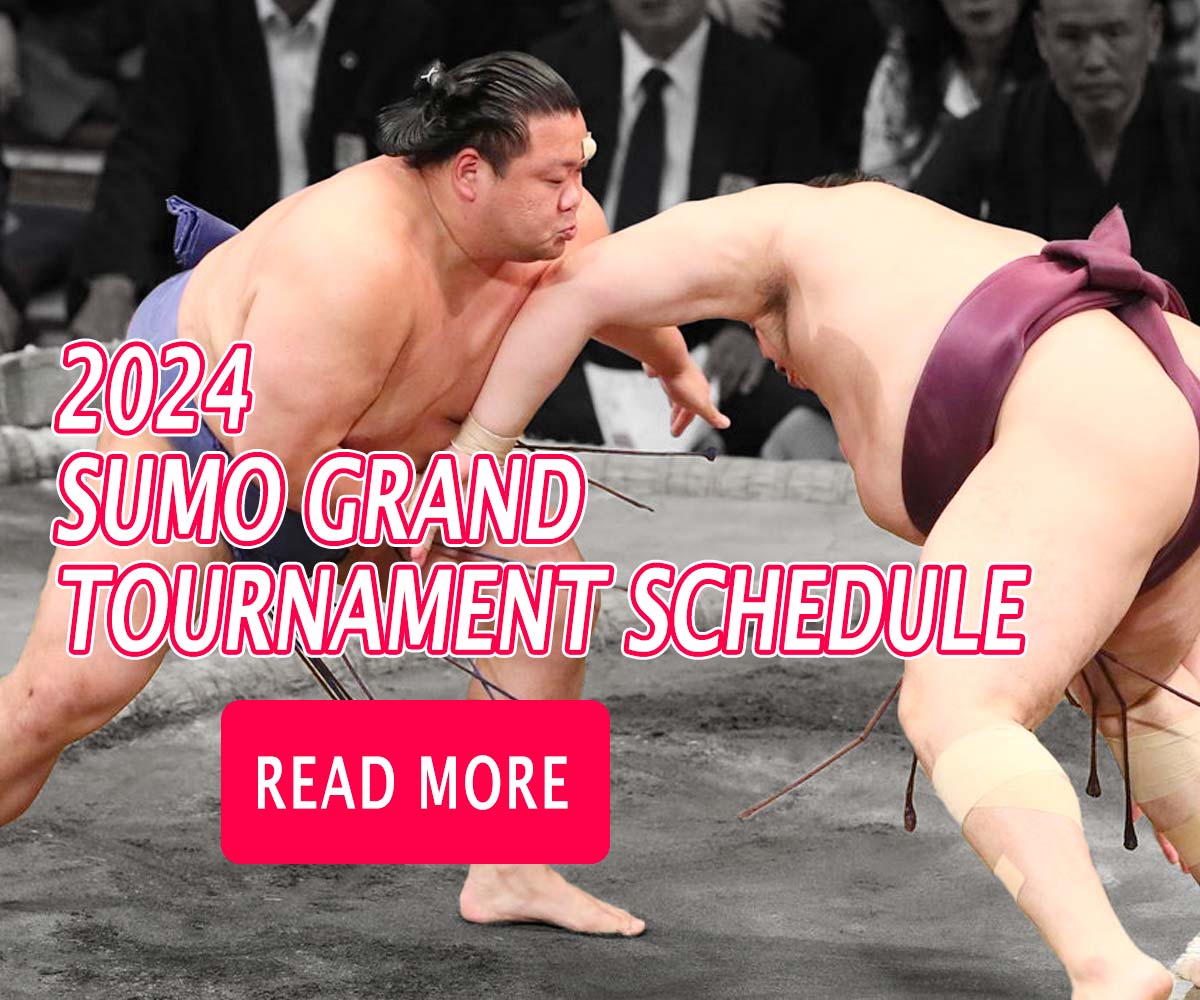














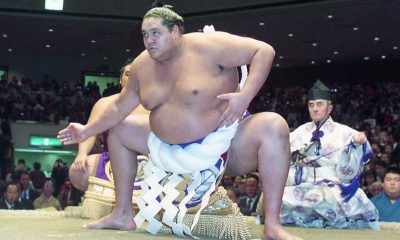

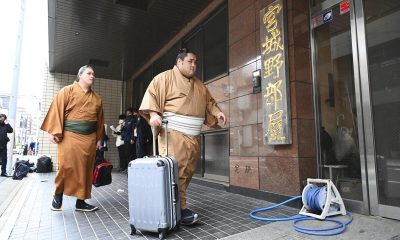



You must be logged in to post a comment Login